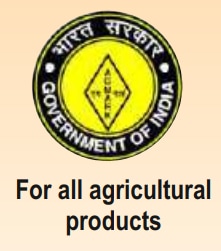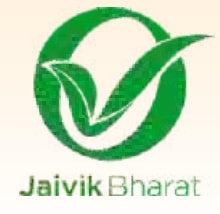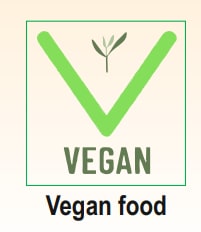📣 For more lifestyle news, click here to join our WhatsApp Channel and also follow us on Instagram
Why ICMR recommends paying attention to those symbols on food packages
These logos can empower consumers to make healthier decisions for themselves and the family
 The ultimate goal is to empower consumers in India to make informed choices (Source: Freepik)
The ultimate goal is to empower consumers in India to make informed choices (Source: Freepik)Have you ever wondered what those logos on your food packaging or labels really mean? They actually carry important information about the nutritional value of the product.
The Indian Council of Medical Research (ICMR) recently released dietary guidelines for Indians (DGIs) to help consumers make informed choices about their food. “Food labels display the name of the food, a list of ingredients, the net weight, brand name, name and address of manufacturer, date of manufacture, use-by/expiry dates, storage instructions, allergen declaration and shelf-life of the food.”
As per the guidelines, these labels contain symbols that consumers must check before purchasing a product. These logos can empower them to make healthier decisions for themselves and the family.
Specific meanings and significance each of the logos found on food packaging
Kanikka Malhotra, clinical dietician and diabetes educator, says, “As a clinical dietician, I often see confusion around food labels.”
The ICMR’s 2024 guidelines, she adds, aim to simplify this with logos that can empower everyone to make informed choices. Here are some common ones you will see on product packages.
| Name | Symbol | What it means |
| FSSAI (Food Safety and Standards Authority of India) |
 FSSAI logo FSSAI logo
|
Ensures basic food safety and hygiene standards. |
| ISI (Bureau of Indian Standards) |
|
Indicates compliance with specific quality and safety parameters set by the government. |
| Agmark (Agricultural Mark) |
|
Identifies agricultural and processed food products meeting government quality standards. |
| Fortified |
|
Added essential vitamins and minerals to the food. |
| Veg/Non-Veg |
|
Denotes vegetarian or non-vegetarian origin. |
| Jaivik Bharat (Organic) |
|
Produced organically without synthetic fertilisers or pesticides. |
| Vegan |
|
No animal products are used in the food. |
| Gluten-Free |
|
Contains no gluten, suitable for celiac disease or gluten sensitivity. |
How do these logos help consumers in making healthier food choices
According to Malhotra, these logos help consumers make informed choices aligned with their dietary preferences and health goals. “However, the ICMR guidelines caution that food labels can be misleading, advising consumers to read detailed nutritional information rather than relying solely on logos,” she stresses.
The logos, Malhotra says, focus on a single aspect like safety or the content, but don’t tell the whole story about ingredients or nutrition. To make informed choices, look beyond logos and check the ingredients list as well as the serving sizes.
For example, an FSSAI-approved product might be high in sodium, and a veg symbol doesn’t guarantee healthy vegetables are the main ingredients. Terms like “healthy” or “natural” have loose interpretations. “Natural” ghee might still have high saturated fat, she elaborates.
The guidelines also recommend choosing a variety of foods from different groups to ensure a balanced diet, she says. They help you to:
Identify healthier options: By prioritising logo-marked products, you’re more likely to choose choices that meet ICMR’s dietary recommendations.
Compare at a glance: Logos simplify side-by-side comparisons between similar products, allowing you to pick the one that better aligns with your dietary needs.
Make informed decisions: With this information, you can build a healthier grocery list and promote better overall dietary patterns.
The ultimate goal is to empower consumers in India to make informed choices that contribute to a healthier population and a reduced risk of chronic diseases.
Understand the logos better
In India, food labels help you make informed choices. FSSAI ensures safe food handling and clear labels. They set rules for clean ingredients, limits on additives, and contaminants, hygienic handling by food businesses, and clear food labelling to keep customers informed and safe.
ISI mark guarantees a product meets safety and quality standards. This could involve things like ensuring accurate labeling, or meeting performance benchmarks for durability.
The Agmark logo on agricultural and processed food products signifies they’ve met government standards for things like purity, size, moisture content, presence of contaminants and minimum fat content.
Fortified foods in India often pack an extra punch of nutrients to address common deficiencies. This can include iron, iodine, vitamins A & D, folic acid, and sometimes Vitamin B12 (especially in milk alternatives).
The green Veg symbol in India means the food is vegetarian, including dairy. The brown Non-Veg triangle indicates meat, poultry, fish, or eggs.
Jaivik Bharat (Organic) means no synthetic fertilisers or pesticides, but details aren’t on the label. These fertilisers add nitrogen (urea, ammonium nitrate), phosphorus (DAP), and potassium (MOP). Pesticides target weeds (herbicides), insects (insecticides), and fungi (fungicides).
Vegan food is classified as entirely plant-based, meaning it contains no animal products like meat, dairy, eggs, or honey. It focuses on fruits, vegetables, grains, legumes, nuts, and seeds.
Gluten-free means the food lacks gluten, a protein in wheat, barley, and rye that can cause health problems in people with celiac disease or gluten sensitivity.
Criteria and process used to assign these logos to different food products
The ICMR has established specific criteria for assigning the vegetarian, non-vegetarian, fortified food, and organic food logos to food products. These criteria, Malhotra informs, are based on the nutritional content, ingredients, and production methods used in the manufacturing process.
“To receive a logo, food manufacturers must submit their products for evaluation by the ICMR. The evaluation process involves testing the product for compliance with the established criteria and ensuring that the information provided on the packaging is accurate and not misleading.”
📣 For more lifestyle news, click here to join our WhatsApp Channel and also follow us on Instagram



- 01
- 02
- 03
- 04
- 05


 ISI (Bureau of Indian Standards)
ISI (Bureau of Indian Standards) Agmark (Agricultural Mark)
Agmark (Agricultural Mark) Fortified
Fortified Veg/Non-Veg
Veg/Non-Veg Jaivik Bharat (Organic)
Jaivik Bharat (Organic) Vegan
Vegan Gluten Free (Representational image)
Gluten Free (Representational image)





















